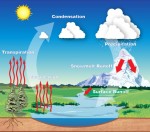
Thursday, August 25th, 2016
New Real-Time Maps Transform Forecast Data into Vivid Pictures of U.S. River Flows REDLANDS, Calif.—August 25, 2016—Smart-mapping leader Esri today released a beautiful, robust new collection of Web maps that forecast NOAA stream-flow data throughout the continental U.S. Esri’s multiscale visualization of the National Water Model enables forecast water flows in real time at high
Monday, November 25th, 2013
DigitalGlobe is planning to enter the estimated $40 billion geospatial big data market in an effort to expand its business, the Denver Post reported Thursday. Kristen Leigh Painter writes DigitalGlobe executives told investors Wednesday at a Denver conference that the company plans to grow beyond being a satellite imagery provider. Read More
Sunday, November 3rd, 2013
The Self-Powered Ad-hoc Network (SPAN), a wireless ground sensor system from Lockheed Martin in Bethesda, Md., will soon be able to connect with unmanned aircraft systems (UAS, also known as unmanned aerial vehicles or UAVs) to provide pervasive coverage and persistent surveillance of designated areas.
Monday, September 16th, 2013
You write a book and you think you’re done. But it’s only the beginning. When On the Map appeared in hardback last year I embarked on the traditional round of book festivals and pre-Christmas signings, almost all of them highly enjoyable. It’s always (okay, almost always) a pleasure meeting readers. But the problem with meeting your
Sunday, August 4th, 2013
From its headquarters in a Longmont industrial park, DigitalGlobe is quietly saving lives, preventing environmental contamination and advising national governments. The company’s recently completed merger with GeoEye has moved DigitalGlobe, well-known in the aerospace and technology fields for its global satellite imagery, into a new realm of worldwide information — fully realized in late July
Wednesday, July 10th, 2013
Whenever there’s a disaster anywhere in the world, DigitalGlobe deploys satellites to capture images. But the Moore tornado was one of the first tests of Tomnod’s crowdsourcing system post-acquisition. Immediately after the disaster, DigitalGlobe put a call out on social media channels for volunteers to analyze the damage. Anyone who accepted the challenge was asked
Tuesday, May 7th, 2013
Whether they’ve been making maps for 20 years or two weeks, just like any designer, cartographers need inspiration when starting their latest project. Inspiration can come from many places and take many forms. Here at Ordnance Survey we use a range of resources and we want to share some of them with you. In this
Thursday, February 14th, 2013
What are the implications for scientific researchers in the geospatial realm? Scientists are normally concerned with how the Earth works. But the dominating force of humanity on the Earth begs the question of how the Earth should look, especially with regard to landscape architecture, urban planning, land use planning and zoning, and ocean/coastal management. These
Monday, January 28th, 2013
SSTL has been awarded the contract by the National Space Organization (NSPO) in Taiwan for the design and manufacture of up to twelve satellite platforms for the FORMOSAT-7/COSMIC-2 constellation. The contract was awarded in an open international competition, with SSTL providing the most cost-effective solution.